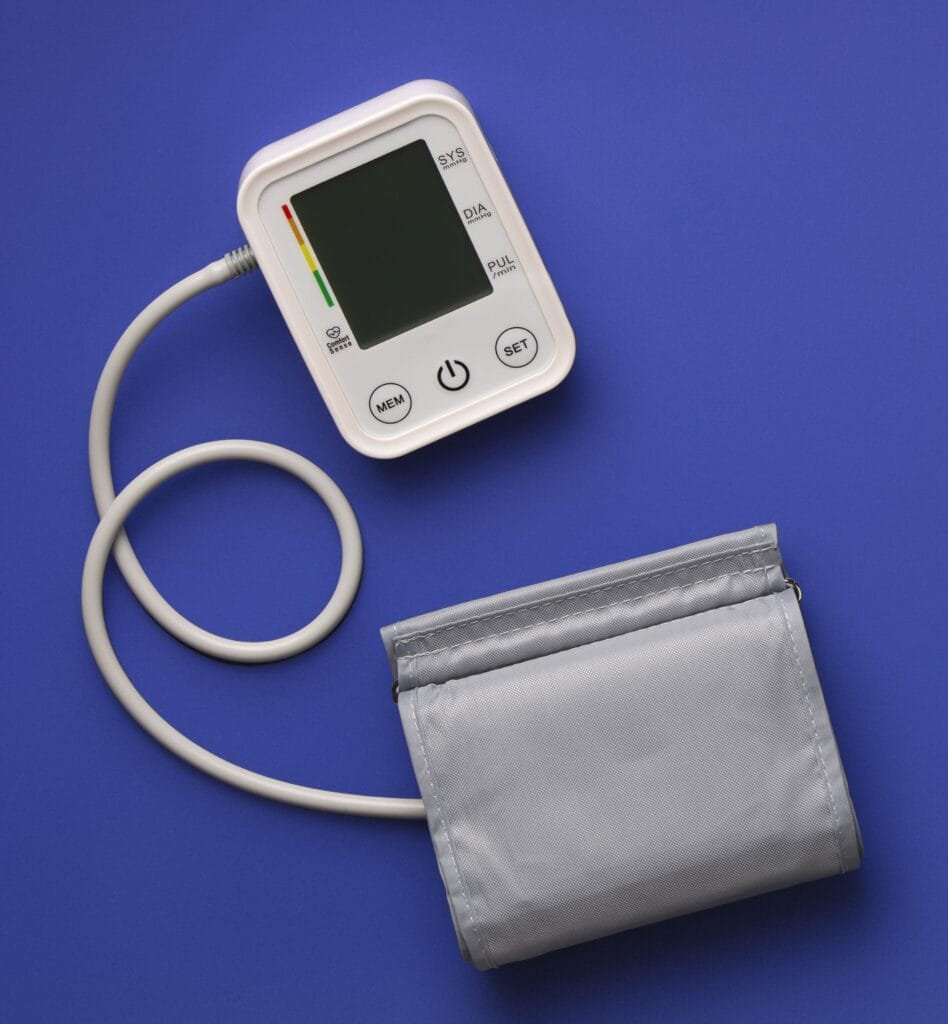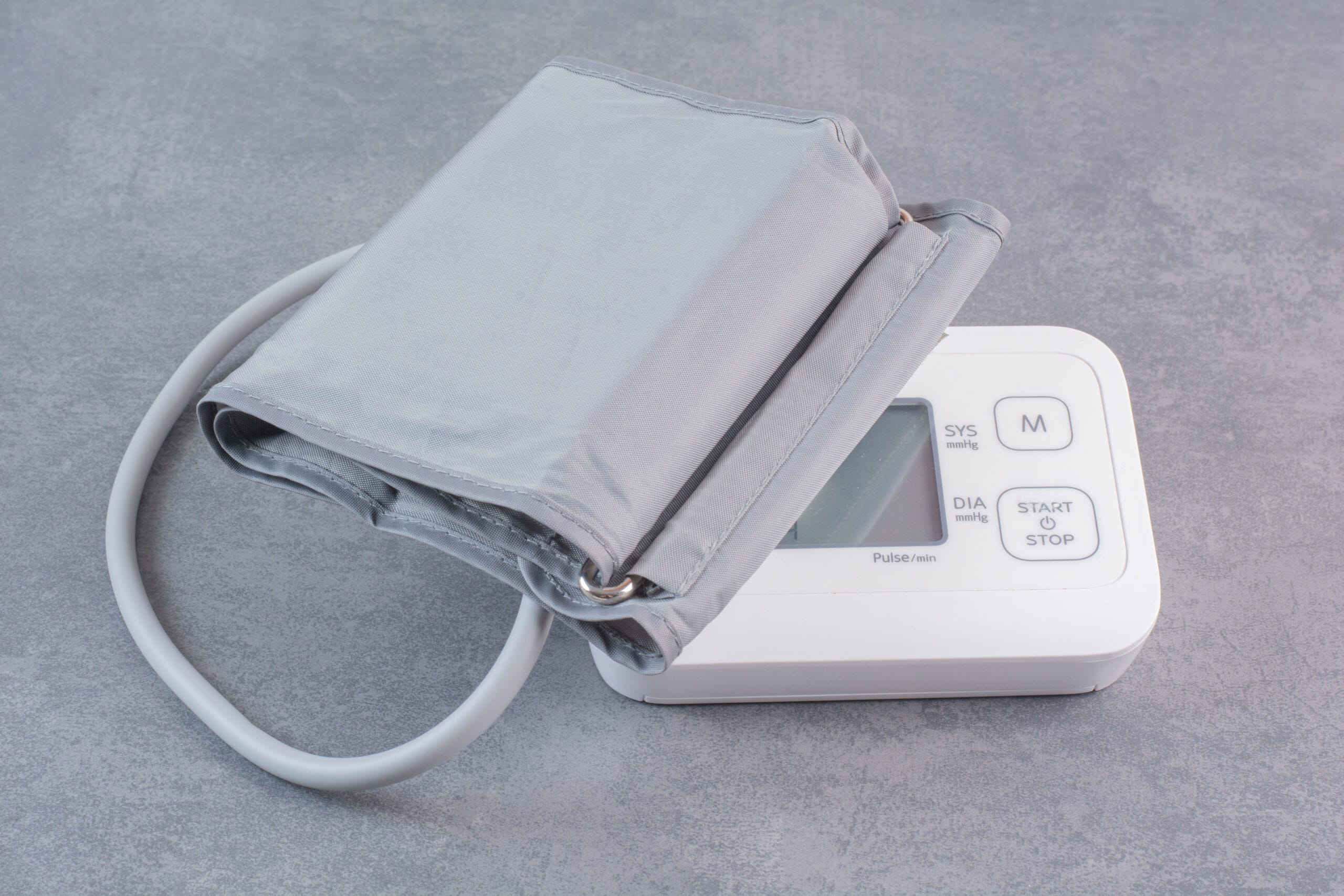What is a Digital BP Monitor?
A Digital BP Monitor is an electronic device used to measure your blood pressure and display it on a digital screen in a numerical value. You will get an accurate result if you use the cuff properly. The traditional mercury or manual monitor requires a stethoscope and medical expertise, but a Digital BP Monitor can be easily used at home. Usually, a blood pressure reading gives two values: a) Systolic Pressure, i.e., the pressure in your arteries when the heart pumps blood, and b) Diastolic Pressure, i.e., the pressure in your arteries when the heart rests between beats. When your reading shows 120/80 mmHg, it means – 120 is the systolic pressure and 80 is the diastolic pressure.
Features of Digital BP Monitor
- Digital display: It provides clear readings for systolic pressure, diastolic pressure, and pulse rate.
- Automatic inflation and deflation: The Digital monitor does not require manual pumping. The cuff inflates and deflates automatically with the push of a button.
- Pulse rate detection: Pulse rate is detected by sensing heartbeat oscillations from the blood flow in the arm while the cuff inflates and deflates.
- No stethoscope needed: Digital monitor does not require a stethoscope; it can be operated simply by pushing a button.
- Portability and user-friendly: It is a compact, lightweight, and battery-operated BP monitor. You can easily carry it from home to the office or for travel use. It can be operated by all age groups.
- Memory storage: Digital monitor stores past readings from 3 to 120 or more readings, depending on your model.
- Irregular heartbeat detection: It can detect and alert you to irregular heart rhythms, providing a crucial warning sign for potential conditions.
- Accuracy: The Digital Monitor is clinically tested to provide precise measurements, which are essential for monitoring your health.
Benefits of a Digital BP Monitor
There are several reasons why people prefer Digital BP Monitors today:

- It is very easy to use. Anyone without medical training can measure blood pressure at home.
- Easy to carry while travelling.
- Many models save past readings to help track your health over time.
- Digital BP Monitor can give accurate readings within a second.
- Automatic inflation and deflation make it painless.
- Cuffs are designed to fit most adults for accurate positioning and comfort.
- Advanced models can connect to a computer or smartphone via USB or Bluetooth connectivity to upload and track data over time.
- It is cost-effective.
Types of Digital BP Monitors
Digital BP monitors are available in different types depending on how they are used:
Upper Arm Monitors
The Upper Arm Monitors are recommended by doctors as they provide the closest results to professional devices. This is a commonly used BP monitor. A cuff is wrapped around the upper arm, and it provides accurate results.
Wrist Monitors
Here, the cuff is wrapped around the wrist, making it comfortable.
Finger Monitors
This is the smallest and portable BP monitor. It is fitted on your finger to measure BP. This BP monitor is not reliable for medical use, but suitable for quick and casual checks.
How to Use a Digital BP Monitor Correctly
To get the most accurate results, follow the step-by-step guide:
- Sit comfortably in a chair.
- Rest quietly for 5 minutes before measuring.
- Wrap the cuff on your bare upper arm correctly.
- Place the cuff about 1 inch above the elbow crease.
- Make sure it is snug but not too tight.
- The tube from the cuff should be run down the centre of your arm.
- Press the start/power button on the monitor.
- The cuff will inflate automatically and then deflate slowly.
- Stay quiet and do not talk during measuring.
- The screen will display Systolic pressure, Diastolic, and pulse rate.
- Note down the readings with date and time.
- You may take 2-3 readings for better accuracy, and then note the average.
The best Digital BP Monitors in India (2025)
- Omron BP Monitors
- Dr. Morepen BP Monitors
- Tata 1mg Digital BP Monitors
- Control D BP Monitors
- Other popular brands
Which is the best BP Monitor: Digital BP Monitor vs Manual BP Monitor
| Features | Digital BP Monitor | Manual BP Monitor |
|---|---|---|
| Ease of use | Easy to use, wrap the cuff and press the button. | Requires skill for using a stethoscope and a sphygmomanometer. |
| Display | Display systolic, diastolic, and pulse rate on the digital screen. | The manual dial shows only BP. Pulse needs a separate check. |
| Portability | It is compact, lightweight, and battery / USB powered, hence travel-friendly. | It is bulkier, hence not travel-friendly. |
| Maintenance | Need battery or calibration occasionally. | Mercury type requires careful handling, and an aneroid needs regular calibration. |
| Accuracy | Shows accurate readings if the cuff is placed properly. | Highly accurate if used correctly by trained professionals. |
| Power Source | Battery, USB, or adapter required. | No power required. |
| Memory/Storage | It can store past readings, and some models allow 2+ users | No memory. Readings must be written manually. |
| Suitable for | It is suitable for home monitoring, the elderly, and individuals who self-check. | This is suitable for clinics, hospitals, doctors, and highly accurate checks. |
| Price | Price is moderate to high, depending on the brand. | Cheaper than digital ones. |
| Extra features | Bluetooth connectivity, smartphone app, average reading, and arrhythmia detection. | No extra features. |
Who should use a Digital BP Monitor?
A Digital BP Monitor is useful for many people, especially for those who need to track their blood pressure regularly.
- People with Hypertension (High Blood Pressure).
- People with Hypotension (Low Blood Pressure).
- Heart patients.
- People with chronic conditions.
- People with blood pressure medications.
- Elderly people.
- Pregnant Woman
- Health and fitness-conscious individuals.
Customer reviews:
- “Nice product, I am happy to have Omron HEM-7120 BP monitor at my home. cost is reasonable and the best part is we can use AC adapter instead of batteries. accurate readings. light weight compact size easy to handle.” – Sairam P.
- “An excellent product and available at a very reasonable price compared to local market. Its accurate and very user friendly. A must have Product for all health conscious people.” – Dr. Manas Mishra.
- “Excellent product, accurate measurement east to use” – Satish Kumar Ganda.
- “Best in the market! this is my second order … perfect reading … go for it … best of best”. – Manima Yesmin.
- “Brand was recommended by Doctor. I absolutely love this BP machine comfort fit arm cuff is super nice for perfect placement on my arm … great blood pressure monitor to have handy at home.” – Rohit S. Deshkari.
Frequently Asked Questions:
1. Are the digital blood pressure monitors accurate?
Ans: Yes, digital blood pressure monitors can be accurate, but their reliability depends on buying a validated device and using it correctly, considering factors like cuff position, user posture, and consistent measurement techniques. While some digital monitors are less accurate, especially wrist-based models or unvalidated devices, many validated upper-arm monitors provide reliable readings for home use.
2. Can a digital blood pressure monitor be wrong?
Ans: If a cuff is too small or too large, measurement errors can occur. Adding to the inaccuracy are automated devices that have not been tested for accuracy, which can account for errors in systolic BP.
3. What is the best time to check blood pressure?
Ans: The best time to take your blood pressure is in the morning, before eating or taking any medication, and again in the evening before bed. For the most accurate and consistent readings, always aim to take your measurements at the same time each day, following the same procedure and avoiding stimulants like caffeine, smoking, and vigorous exercise for at least 30 minutes beforehand.
4. How to reduce BP naturally?
Ans: Try these lifestyle changes as natural ways to lower blood pressure.
- Balance nutrients. Go for less sodium (under 1,500 mg per day) and more potassium.
- Put probiotics on your side. …
- Lose even a little weight. …
- Move more. …
- Relieve stress.
5. Are wrist BP monitors accurate?
Ans: Wrist blood pressure (BP) monitors are generally less accurate and reliable than upper-arm monitors, with the American Heart Association (AHA) recommending upper-arm models for most people. While wrist devices can be useful for tracking trends, especially for those who travel, their accuracy depends heavily on precise placement at the heart level and correct technique, which is often not achieved in real-life situations. To maximize accuracy, ensure the device is validated, position your wrist at heart level, and consistently use the same technique.
Conclusion:
A Digital BP monitor is a smart and convenient device for measuring blood pressure at home. It is beneficial for those people with hypertension, heart disease, diabetes, and for health-conscious people to monitor their health regularly. With proper use of it, you will get accurate readings of your health. Choosing a clinically tested model ensures trustworthiness and makes a Digital BP Monitor partner in maintaining your healthy lifestyle.

